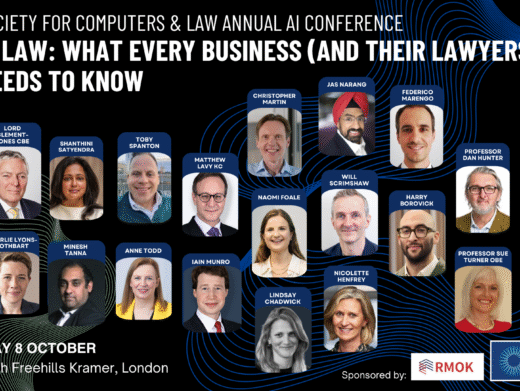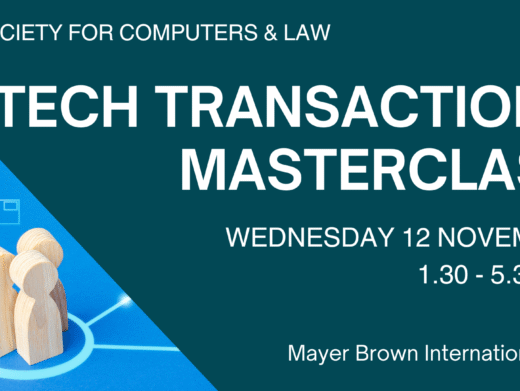The William Tell Overture. The theme from Neighbours. Our daily lives have become punctuated with the trilling of mobile phones. Their proliferation has sparked a revolution, with people everywhere scurrying around apparently talking to themselves rather than their neighbour.
The convergence of mobile phones with devices such as personal digital assistants (PDAs), and in particular the Global Positioning System (GPS), looks set to create a vast range of technological and legal opportunities. GPS is based on a system of US military satellites that emit signals allowing anyone with a GPS receiver to determine their exact position anywhere on earth, give or take a few metres. These receivers have been used on boats, by walkers and are now standard on some cars; they can be bought in any local electronics or hiking shop for as little as £100 – Casio even produces a wrist-watch version. Great – but what can this technology offer? Is it all good news, or will there inevitably be some drawbacks?
Connect a device that can transmit and receive information (in other words, a mobile phone) to a GPS unit and a PDA. Suddenly, your mobile phone company can accurately plot where you are, and complete strangers – advertisers included – can leave you all kinds of messages: text, voice files, pictures, even video, using what are becoming known as “sky hooks”. As the user passes through a location for which there is some information stored (directions to a shop for example), the central system detects this and sends the information to them. The sending is transparent to the user so it’s as if the message is invisible, but hanging there in mid-air on a virtual hoarding. Each space can be referenced by any number of service providers. This has immense potential: new consumer gadgets, new utilities for business use, and a whole new channel for advertising.
Another possibility: Think of it. Meeting finished early in
There are opportunities here for business-specific services by using additional transmitters based on one of the growing number of wireless technologies to allow GPS-like location indoors. Anyone visiting a client could receive a guide to the client’s location – even to the very meeting room where the meeting will be held – with access doors locking and unlocking, letting you bypass a receptionist who already knows who and where you are, and where you are authorised to go. The visitor receives swift PDA reminders of the identity of the people that he is passing in the corridor, with their titles and mobile numbers included. At the risk of offending cultural sensibilities, introductions could be effected automatically as you get through the meeting room door – or at least, more realistically, there will be no need to write down everyone’s details as they are spoken.
Busy staff could use the technology to make a fast search for colleagues elsewhere in the building, saving the need to tell callers ‘well he’s not at his desk at the moment but I’ll take a message’. For law firms that charge by the six-minute unit, such minute automatic tracking of individuals’ movements could be an attractive albeit unpopular investment.
The quality of messages and the services received will ultimately depend on the choice of service provider and what ‘blocks’ are activated on the PDA. If you sign up for a cheap or free service, and if free Web-based e-mail is any indicator, you can expect your PDA rapidly to fill with adverts, and a significant proportion of the advertising material may not only be unwanted, but also of dubious taste.
Many people have free e-mail services that they access at work. These e-mail accounts often get spammed with exhortations like “Make $$$ in your spare time” or “Good Times? – Click Here”. At present, this is not too much of a problem: the user can immediately delete the item, and in any event would have to take positive steps to save the item onto the office system. Any employee saving even a small number of suspect items would be hard put to claim they had done so accidentally.
Consider now a PDA used for diary e-mail etc which gets backed up at the office, updating the network with all that has been collected on the PDA that day. The user is unlikely to check every item as it loads. In the future, a quick back-up at your office after your PDA has trawled the ether as you walked down the street could leave you facing disciplinary proceedings for ‘downloading material of dubious content’. User vigilance and use of security measures to block or filter PDA reception could prove vital.
Recruiters will soon be able to leave highly targeted sky hook adverts literally at the front door of a competitor’s office. There are currently no intellectual property rights in a location, so the targeted competitor will have a problem forcing the removal of such adverts. Employers could ensure that the business services limit this potential or even order employees to turn PDAs off, but employers could still do nothing about employees, personal systems.
A sky hook advert is analogous to placing a billboard advert outside an office. Whilst sky hook advertising could be as effective as calling each employee in turn, it could still be argued to be merely ‘general advertising’ as there is no direct call to the user’s phone number and anybody walking down that road could pick up the advert. One means of protection may be contractual. Within months, contract clauses prohibiting poaching of staff, but allowing recruitment via general advertising, may be revamped to incorporate a ban on, say, ‘PDA sky hook adverts within 10 metres of the office’.
The prospective uses of this technology are still being considered. The technology industry has been particularly interested in its potential for the consumer market, but there is significant potential for the business market too, providing that security concerns are addressed. If, or rather when, this technology really comes into its own, lawyers and internal policy makers will need to revisit not only their standard terms and internal procedures, but also some of their most basic assumptions about how we communicate with our fellows.
Further reading :
“System for serving information based on location”, Research Disclosure, 01/2002 Article 110 pg. 96, issue no. 453, IBM
“ActiveCampus – Sustaining Educational Communities through
“Stalker tech” article: http://salon.com/tech/feature/2002/06/11/stalker_tech/index.html
Description of the Casio SATELLITE NAVI PAT2GP-1V watch:
http://www.casio.com/watches/product.cfm?section=14&market=0&product=3682
Note: Company, product or service names may be trademarks or service marks of others.
Kevin Aires, IBM United Kingdom Limited (IBM),
airesk@uk.ibm.com
Hazel Raw, v-lex ltd Nottinghamshire
Hazel.Raw@v-lex.com




